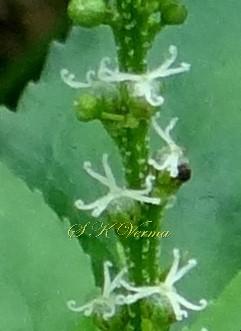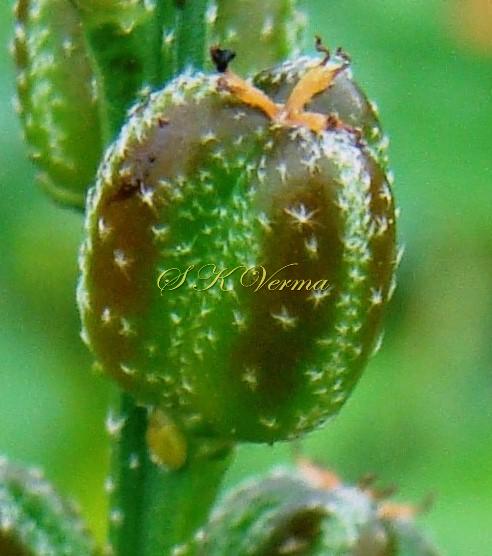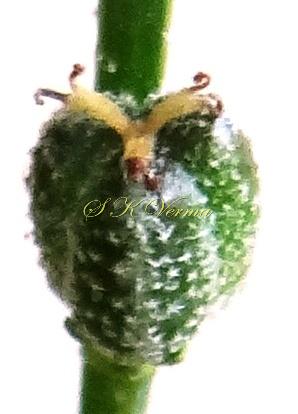CROTON
Croton
L., Sp. Pl. 2: 1004. 1753; Gen. Pl. ed. 5: 436. 1754; Benth. and Hook. f., Gen. Pl. 3(1): 293. 1880; Hook. f., Fl. Brit. Ind. 5: 385. 1890; Li & Esser, Fl. China @ eFlora.org 11: 258; Berry, Fl. North Amer. @ eFlora.org vol. 12; Radcliffe-Smith, Fl. Pak. @ eFloras.org p. 43.
Herbs, subshrubs, shrubs or trees, monoecious, rarely dioecious; indumentum stellate-pubescent, lepidote or both; latex colourless to reddish or absent. Leaves alternate, rarely opposite or whorled, petiolate, usually stipulate, simple, entire, toothed or lobed, penni- or palminerved, usually with a pair of glands at base of leaf blade. Inflorescence axillary or terminal, bisexual (rarely unisexual), racemose or spicate, with male flowers distal and female flowers proximal, often in clusters; bracts small; pedicels present or absent. Male flowers: Sepals 3-6, mostly 5, free, valvate or imbricate, +/- equal. Petals 3-6, mostly 5, rarely 0, free, usually equal or shorter than sepals. Disc glands usually 5, rarely 0. Stamens 3- infinite, filaments free, inflexed in bud, on a usually pilose receptacle; anthers muticous. Pistillode absent. Female flowers: Sepals usually 5, often narrower than in male flowers, imbricate to valvate, persistent, often slightly accrescent, equal or unequal. Petals usually 5, smaller than in male flowers, mostly reduced or obsolete or 0. Staminodes sometimes present. Disc annular, of separate glands or vestigial; receptacle often villous. Ovary usually 3-locular with one ovule per cell; styles 3, longer and slender, free or nearly so, once to several times bifid. Fruit a schizocarpic capsule dehiscing into three 2-valved cocci or more rarely +/-indehiscent and fleshy, drupe-like or berry-like. Seeds usually smooth, carunculate; testa crustaceous or woody.
1154 species
Croton bonplandianus
Croton bonplandianus
Baill., Adansonia 4: 339. 1864; Radcliffe-Smith, Fl. Pak. @ eFloras.org p. 43; C. sparsiflorus Morong, Ann. New York Acad. Sci. 7: 221. 1893..
Monoecious woody herb or shrub, up to 1.5 m tall. Stem erect, branching whorled, young shoots. Leaves alternate, opposite or whorled. Petioles 10-17 mm long with adaxial groove, evenly stellate-lepidote. Leaf blades membranous, ovate, ovate- lanceolate, 2-6 cm x 0.5-3 cm, apex acute, base cuneate, with 2 small sessile discoid basal glands beneath, margin crenate- serrate, penninerved, glabrous above, sparingly stellate- lepidote beneath, dark green. Stipules 0.3-0.5 mm long, subulate, stellate-lepidote. Inflorescence terminal raceme, up to 15 cm long, the lower third female, rest above male, flowers often in clusters; inflorescence axis sparingly stellate-lepidote to subglabrous; bracts small, triangular lanceolate, ca. 1 mm long. Male Flowers: Pedicels 1-1.5 mm long, glabrous; buds globose, subglabrous. Sepals 5, connate at base, lobes valvate, elliptic, ovate, concave, nearly equal, ca. 1.5 mm x 1 mm, subacute, greenish-yellow. Petals 5, free, oblong, recurved, nearly equal to sepals, obtuse, subglabrous, whitish. Disc glands 5, arranged in a ring, small, subglobose, apiculate, reddish-orange. Stamens many (15-22), exserted, filaments ca. 2 mm long, free, inflexed in bud; anthers 0.3 mm long, muticous, connective broad. Pistillodes absent. Female Flowers: Subsessile. Calyx lobes 5, triangular-ovate, ca. 1 mm x 1 mm, subacute, not accrescent, subglabrous. Petals 0. Disc annular. Ovary ellipsoid-subtrilobate, 1.5 mm x 1 mm, densely stellate-lepidote; styles 3, +/- free, ca. 1.5 mm long, spreading, glabrous, bifid, the arms filiform. Fruit ellipsoid-trigonous, 5-6 mm x 4 mm, 1 or 2 glands at the base, septicidally dehiscent, sparingly stellate-lepidote. Seeds compressed-ellipsoid, 4 mm x 2 mm, grey, slightly roughened, caruncle bilobate.
Common Names: Ban Tulsi, Kala Bhangra
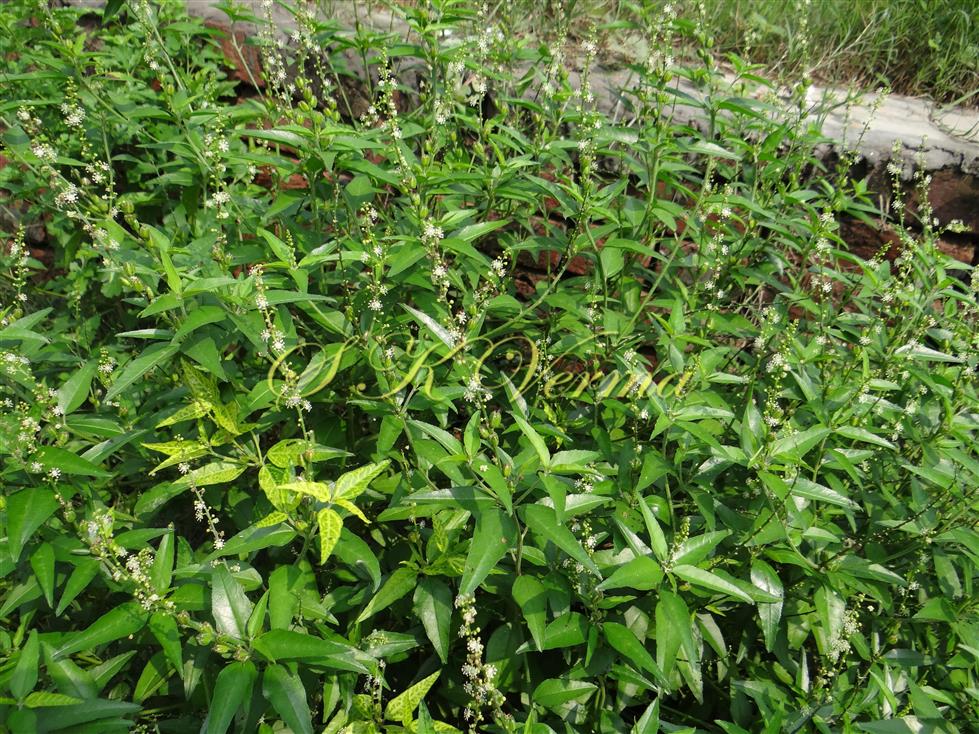


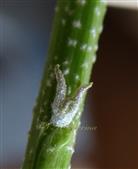
-DSC07725.jpg)
-DSC07728 (1).jpg)
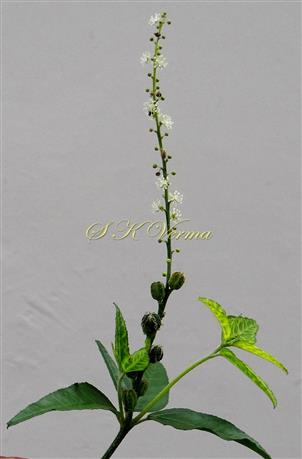
-DSC07495.jpg)
-DSC07499.jpg)


-DSC07503.jpg)



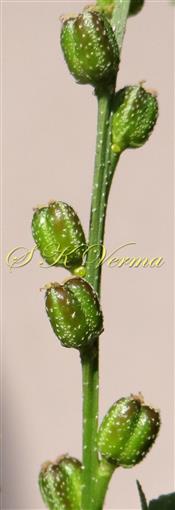
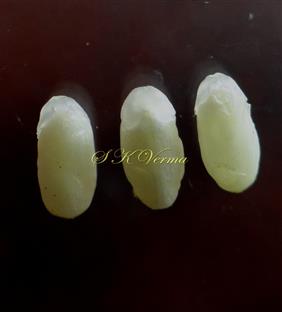


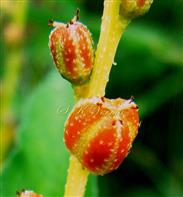





-DSC07725.jpg)
-DSC07728 (1).jpg)

-DSC07495.jpg)
-DSC07499.jpg)
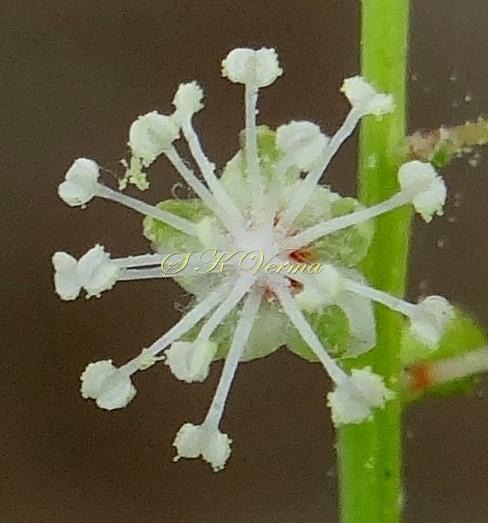
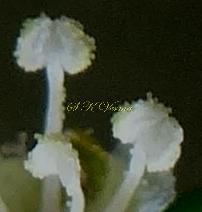
-DSC07503.jpg)

